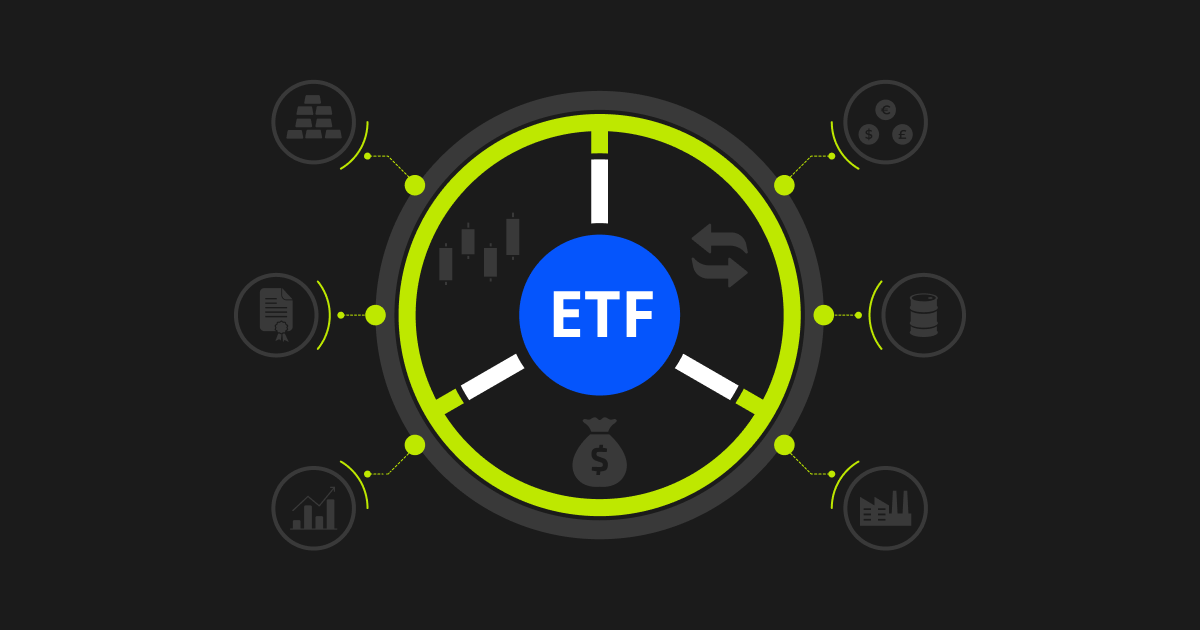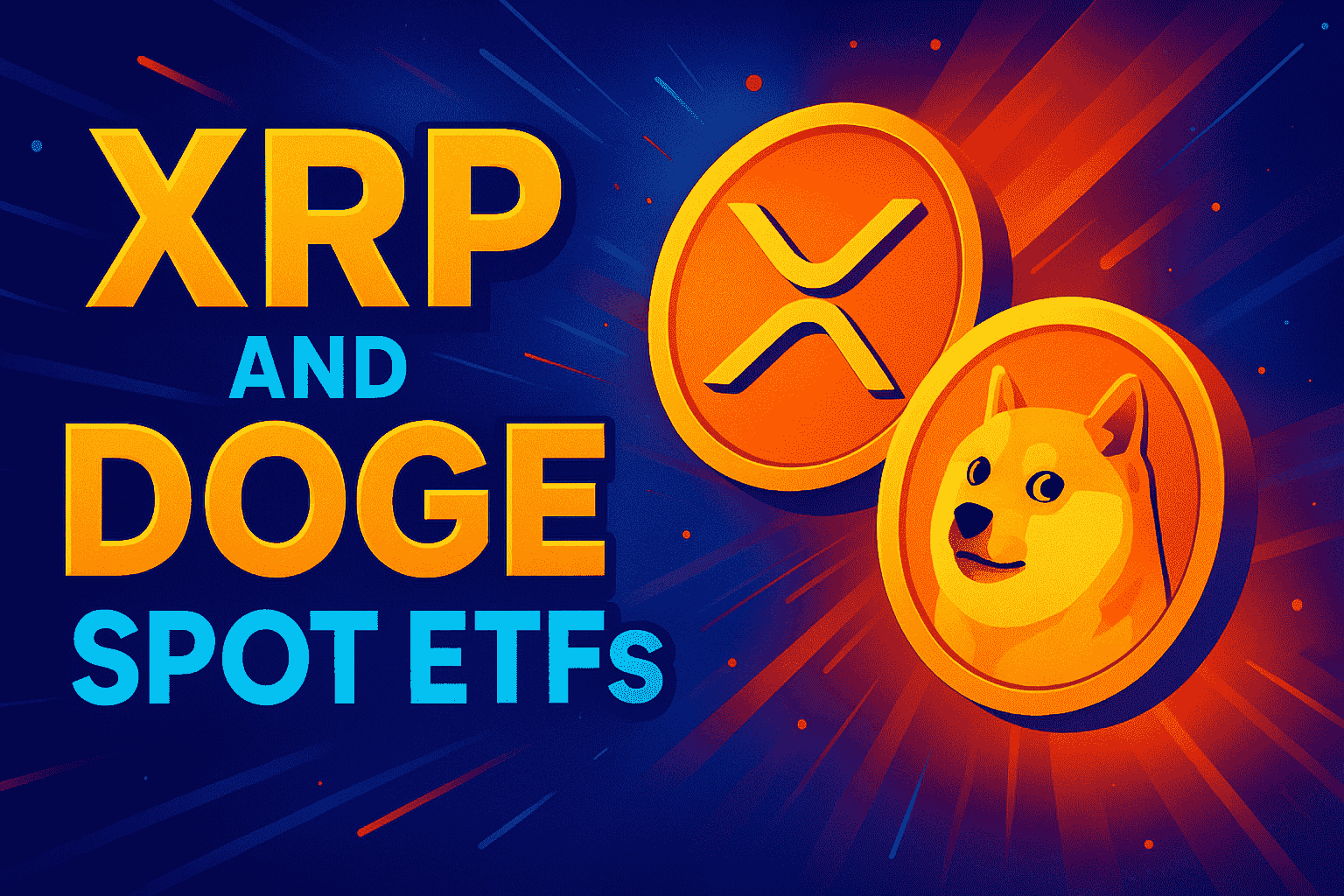On September 18, 2025, the first U.S.-listed ETFs offering exposure to Dogecoin (
DOGE
) and
XRP
are scheduled to launch, marking a pivotal moment for altcoin adoption within traditional finance. These products, issued by REX Shares in collaboration with Osprey Funds, represent a strategic bypass of traditional regulatory pathways, having been structured under the
Investment Company Act of 1940
rather than the more common Securities Act of 1933. This approach has accelerated their time to market amidst a backlog of over 90 pending crypto ETF applications currently under SEC review. This article provides a comprehensive overview of these novel investment vehicles, their regulatory architecture, potential market impact, and the broader implications for the future of digital asset investing.
ETF Filings and the SEC Approval Process
The path to launch for the REX-Osprey Dogecoin ETF (DOJE) and XRP ETF (XRPR) diverges from the traditional process used for spot Bitcoin and Ethereum ETFs. Instead of filing under the Securities Act of 1933—which requires a lengthy review process involving Form S-1 and 19b-4 and often results in delays—REX-Osprey utilized the Investment Company Act of 1940.
A key advantage of the 1940 Act framework is its
75-day automatic effectiveness rule. Once a prospectus is filed, the fund automatically becomes effective after 75 days unless the SEC explicitly objects. This contrasts with the 1933 Act, where the SEC must give active approval, a process that has led to significant delays for other crypto ETFs. Although initially projected to launch a week earlier, the DOJE and XRPR ETFs were confirmed by Bloomberg analyst
Eric Balchunas for a September 18 debut after a brief, unspecified delay.
This regulatory maneuvering occurs while the SEC continues to review a vast queue of other crypto ETF applications, including proposals for
Bitwise’s spot Dogecoin ETF and offerings from
Grayscale and
21Shares, with decision deadlines extending into November 2025 and beyond.
Regulatory Structure: '40 Act and Its Implications
The choice to structure the DOJE and XRPR ETFs under the
1940 Act has profound implications for their design, operation, and investor protection. The 1940 Act is a foundational piece of legislation that traditionally governs
mutual funds and
diversified ETFs, enforcing strict rules on transparency, fiduciary duty, and risk management.
A critical distinction from a pure spot ETF is that these funds are
not required to hold only the physical cryptocurrency. According to filings, the XRPR ETF will allocate
at least 80% of its assets to XRP and related instruments, but it may also hold up to
40% of its portfolio in other ETFs that have XRP exposure. Similarly, the DOGE ETF is structured to hold other spot Dogecoin ETFs, creating a layered exposure model. This structure involves the use of
offshore subsidiaries in the Cayman Islands to facilitate the holding of the underlying assets, adding a layer of complexity.
This model offers enhanced
regulatory compliance and
investor protections mandated by the 1940 Act but comes at the cost of direct, pure spot exposure. It represents a compromise that allows regulators to feel comfortable with the product's framework while still providing investors with a regulated conduit for altcoin investment.
Comparison with Past Spot Crypto ETFs
The launch of the DOJE and XRPR ETFs under the 1940 Act highlights a clear evolution in the strategy for bringing crypto exposure to traditional markets. The landmark
spot Bitcoin and Ethereum ETFsapproved in early 2024 and 2025, respectively, were structured under the
Securities Act of 1933. These are considered "pure" spot ETFs because they directly hold the underlying cryptocurrency, and their approval required a more arduous and uncertain process with the SEC.
The 1940 Act pathway chosen by REX-Osprey is not entirely new to crypto. The same issuer previously launched a
Solana Staking ETF (SSK) using this same framework, which has since accumulated over
$250 million in assets under management (AUM). The key difference lies in the exposure: while the 1933 Act funds offer direct ownership, the 1940 Act funds like DOJE and XRPR offer a
structured, and sometimes indirect, exposure. This can involve a mix of spot holdings, other ETF shares, and potentially derivatives, making them a different breed of investment vehicle compared to the first-generation spot crypto ETFs.
Market Impact Ahead of Launch
The announcement and anticipation of these ETFs have already injected volatility into the DOGE and XRP markets. In the days leading up to the confirmed launch date,
Dogecoin touched $0.30—a level not seen since the beginning of the year—while
XRP reclaimed the $3.00 psychological mark. However, both assets subsequently experienced pullbacks, with DOGE falling roughly
9% and showing technical indicators that suggested a potential "death cross" formation, signaling weakened short-term momentum.
Conversely, XRP displayed a short-term "golden cross" on its 4-hour chart, indicating a potential bullish trend. This positive momentum for XRP has been partly fueled by the success of the
3iQ XRP ETF (XRPQ) in Canada, which has amassed
CAD 150 million (approx. $110 million USD) in AUM, demonstrating existing institutional demand. The market reaction underscores a classic "buy the rumor, sell the news" dynamic, where traders capitalize on the anticipation of a major event and then take profits once it is confirmed.
New ETF Products on the Way
The impending launch of the DOJE and XRPR ETFs is just the beginning of a potential wave of new altcoin investment products. REX-Osprey has also filed for ETFs tied to
BONK and
TRUMP, and other asset managers are actively seeking approval for a diverse range of offerings. The ecosystem of pending applications is vast, with analysts tracking over
90 crypto ETF applications currently before the SEC.
Other notable filings in the pipeline include:
-
Bitwise has filed for a spot
Avalanche (
AVAX
) ETF.
-
Canary Capital has updated its prospectus for a
Litecoin (
LTC
) ETF, with an SEC decision expected in early October.
-
Grayscale has proposals for a
Hedera ETF.
-
The success and flows into DOJE and XRPR products will be closely watched by the entire industry as a crucial
litmus test for investor appetite for regulated altcoin exposure beyond crypto giants, Bitcoin and Ethereum.
Impact of ETF Approvals on Altcoin Adoption and Mainstream Finance
The approval of Dogecoin and XRP ETFs represents a monumental step toward the
mainstream financialization of altcoins. By offering a familiar, regulated, and accessible ETF wrapper, these products significantly
lower the barrier to entry for a vast pool of institutional and retail investors who may be interested in these assets but are hesitant to navigate private keys, digital wallets, and unregulated exchanges.
Furthermore, the use of the
1940 Act framework could serve as a blueprint for other issuers seeking to bring exposure to a wider range of digital assets to market. It demonstrates a pragmatic approach to working within the existing U.S. regulatory regime to provide investors with access, even if the path for pure spot products remains challenging for many coins. Nate Geraci, President of The ETF Store, highlighted that the XRPR ETF will serve as a "
key test of demand" for a spot XRP ETF under the 33 Act, providing valuable data for the SEC and other issuers.
This trend accelerates the convergence of traditional finance (TradFi) and decentralized finance (DeFi), potentially directing substantial amounts of capital from traditional markets into the crypto ecosystem. It also lends a new level of
legitimacy to assets like Dogecoin, which originated as a meme, and
XRP, which has battled a lengthy legal challenge with the SEC.
Potential Risks and Uncertainties
Despite optimism, these new ETFs carry a set of unique risks and uncertainties that investors must consider.
Indirect and Complex Structure: The funds' use of offshore subsidiaries and ability to hold other ETFs means investors are not gaining direct exposure to the underlying spot assets. This adds layers of counter-party risk and complexity that are not present in pure spot ETFs.
Regulatory Scrutiny: While legal under the 1940 Act, these products may still attract scrutiny from regulators like the SEC, who have been cautious about expanding the crypto ETF universe. The regulatory environment remains fluid and potentially hostile.
Altcoin Volatility: The underlying assets, particularly Dogecoin, are known for their extreme volatility. An ETF wrapper does not mitigate the fundamental price risk of these highly speculative cryptocurrencies.
Market Saturation and Competition: With over 90 ETFs pending, the market risks becoming saturated. The success of DOJE and XRPR is not guaranteed, especially considering the tepid flows into REX-Osprey's earlier Solana Staking ETF (SSK), which has seen modest interest.
Tokenomics and Utility Questions: Unlike Bitcoin or Ethereum, the investment theses for Dogecoin and XRP are more nuanced and debated. Questions about their long-term utility and value proposition could impact sustained investor interest.
Conclusion
The launch of the
REX-Osprey Dogecoin ETF (DOJE) and
XRP ETF (XRPR) on September 18, 2025, is a watershed moment for the cryptocurrency industry. It signifies a growing, albeit cautious, acceptance by regulators of the need to provide investors with regulated access to a broader spectrum of digital assets. By cleverly utilizing the
Investment Company Act of 1940, REX-Osprey has navigated a faster, more pragmatic route to market than would have been possible under the traditional framework used for Bitcoin ETFs.
For investors, these ETFs offer a familiar and convenient vehicle to gain exposure to two of the most recognizable cryptocurrencies, complete with the custodial and regulatory safeguards of the traditional financial system. However, this convenience comes with caveats: the exposure is indirect, the underlying assets are inherently volatile, and the regulatory landscape is still evolving.
The performance and inflows into these funds will be critically important data points for the entire industry. Strong demand could pave the way for a flood of new altcoin ETFs, further blurring the lines between traditional and crypto finance. Conversely, weak interest could slow the pace of approval for other pending applications. Ultimately, these ETFs are more than just new investment products; they are a bold experiment in bridging the deep divide between the innovative world of cryptocurrencies and the established guardrails of mainstream financial regulation.
References:
CoinCatch Team
Disclaimer:
Digital asset prices carry high market risk and price volatility. You should carefully consider your investment experience, financial situation, investment objectives, and risk tolerance. CoinCatch is not responsible for any losses that may occur. This article should not be considered financial advice.


